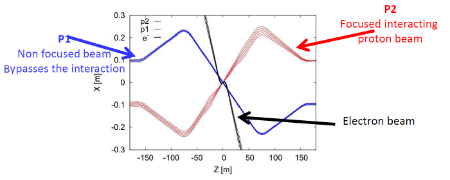Designing the interaction region of the FCC-eh
Over 400 world-leading accelerator and particle scientists gathered in Rome from 11 to 16 of April to discuss the latest advances and remaining challenges in the Future Circular Collider (FCC) study.
FCC is a project led by CERN to produce a conceptual design of a post-LHC research infrastructure based on an energy-frontier circular collider. Currently it is contemplating three different options: a hadron-hadron (hh), electron-hadron (eh), or electron-electron (ee) collider.
One of the speakers at the conference was the former oPAC fellow Dr. Emilia Cruz, currently at the John Adams Institute. Showing off her recently earned doctorate from the University of Liverpool, she presented her work on the design of the interaction region of the FCC-eh.
The FCC-eh would be integrated in the FCC-hh in a similar way as the proposed LHeC will be integrated in the High Luminosity LHC, i.e. it would implement a new Energy Recovery Linac (ERL) to circulate electrons and collide them with one of the proton beams of the hadron collider, so the two collider scenarios could work in parallel.
As in any accelerator, the most challenging part of the designing the interaction region is meeting the requirements of both the detector and the accelerator. Moreover, smaller beam sizes mean tighter constraints. Often competing criteria are found, and compromises have to be taken, so Emilia’s goal was to find the best design that will optimize the luminosity with less impact on the accelerator.
Emilia’s design for the FCC-eh interaction region could work in parallel with the FCC-hh to have a complementary set of experiments, and it can be adapted to accommodate the luminosity requirements, thus offering more versatility than the LHeC.

FCC-eh interaction region: one of the proton beams collides with the electron beam from the ERL while the other proton beam bypasses the interaction.